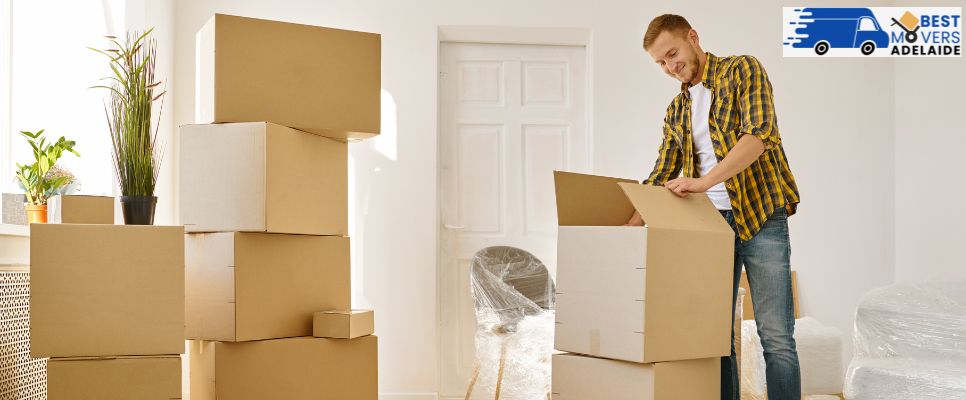Households have several delicate and fragile items like glassware, chinaware, collectibles, antiques, and artwork, along with kitchen accessories and other electronic devices. Packing for fragile items is often different than packing books, mattresses, chairs and tables during the move or storage process. The fear of damage or item breakage can be on your mind unless you have completed the process. If by chance, your fragile items get damaged, you may add this incident to memory for years. Nevertheless, being careful and paying attention to the details will make sure that your delicate items will move safely.
This complete guide includes detailed tips for packing breakable items demonstrating the proper methods and providing important hints.

How To Manage Packing For Fragile Items?
Take it easy when dealing with packing and handling delicate things. Do not rush to get everything packed. Instead, plan out how you will pack, and you will be less likely to make mistakes that could damage items on a moving day. Let us see what you can include in your plan.
Get The Right Packing Supplies
Proper packing for fragile items begins with ensuring that you have all the necessary items you will need for packing. You can purchase bubble wrap, packing paper, packaging tape, scissors, and markers. The use of these materials will be a vital element in the safe packing of fragile items. Invest in high-quality moving boxes of different sizes that are strong enough to stand the weight of your fragile items.
Assess Your Fragile Items
Every single piece comes with its own set of tasks and conditions for smooth packing. Allow yourself some time to evaluate your items and decide which categories require special attention. Do you have any fragile parts that require additional cushioning or bracing? Not only will this help you to see the particular requirements that every one of the things that you have, but you will also be able to provide them with better packaging shape.
Treat Every Piece with Care
After all, the process starts with finding out the breakables and then covering them properly. Begin with wrapping each item separately with bubble paper and pay attention to all surfaces to provide complete sealing. Be more vigilant and focus on the vulnerable areas or protruding parts which usually damage easily. Do not try to be economical by placing an excessive number of things as the chance of collisions and damage increases. However, unlike this, use a systematic approach, and wrap each product with a bubble wrap carefully by securing it with packing tape to avoid movement.
Pack the Items in Right Boxes
Finding the proper boxes that will fit fragile items for safe transport is an essential decision to make. Choose durable moving cartons that can withstand the weight and that can sufficiently protect your items. You should choose small packaging for small items. Pick up smaller boxes to simplify the handling and stop the objects inside from shifting during the transfer. Choose strong, thick boxes that will guarantee optimum protection for your breakable goods. If a cardboard box feels flimsy or weak, get a more durable container to protect your valuables.
Add a Layer of Softness
While packing for fragile items fill box bottoms with some kind of cushioning material like packing paper, bubble wrap, foam, or even towels to protect fragile items. Fill the empty spaces with any remaining items after you packed. Fill any other space with adequate padding to prevent breakage. You must avoid flimsy boxes.
Put the Heaviest Things at the Bottom
When packing fragile items, you should never pack too many things in the same box. However, if you need to pack many items in one box, you can make sure that the packets at the bottom are the heaviest and put smaller objects at the top of the box. Use cardboard dividers or specialised boxes having dividers with them to fix glasses and stemware at their position so that they don’t shift or collide during the movement.
Don’t Overstuff Boxes
Keep in mind that you need to be generous with space for fragile items. You should not stuff too many things into the same box. Fill the extra spaces with padding for protection. There should also be adequate space left on top of the box to cover it with a thick layer of padding. Don’t worry about having more than enough boxes while buying them.
Fill Hollow Goods
Fill the glass, jars, and hollow items with packing paper to incorporate vibration reduction as well as breakage prevention elements during the handling and transport. Place each item carefully into its bag according to its size, shape, and material. Secure loose pieces individually using bubble wrap or packaging paper for added protection. Make sure all the boxes are properly sealed with packaging tape before loading them.
Secure Boxes with Plenty of Packing Tape

You should be generous in the covering of the tape to ensure a precision repair and provide reinforcements for a fragile object to avoid the shift while in transit. Seal the base of each box with extra strips of tape for enhanced support and resistance from being bowed under the weight of its belongings. Ensure that the bottom and edges of the box are adequately reinforced with additional strips of tape to safeguard them against falling apart during delivery. Conduct a final inspection to make sure all boxes are sealed properly and ready for shipment. Spending extra time to have the boxes closed correctly will greatly minimize the risk of them getting damaged.
Label Boxes Neatly
Clearly labelling items that are delicate and need extra care is essential to have them be handled correctly during the moving process. Label each fragile item box with a permanent marker so the movers can easily identify them during the move. Moreover, of course, put the word “Fragile” on the box on all sides and attach a guide as to how to handle them too, if you have any. It will notify the movers and handlers not to carelessly handle these boxes thus endangering their possession.
Final Words
Through this guide on packing for fragile items, you can understand how to pack fragile belongings and protect your valuable possessions during transit. In case you have to choose the right supplies or consider them while they are being transported, every single step becomes an important one if you want to avoid damaging your valuables. Allowing you to devote time and energy to packing in a proper manner gives you the satisfaction of having what you need when it comes to storing your stuff safely.


 4.3
4.3
 207+ Reviews
207+ Reviews



